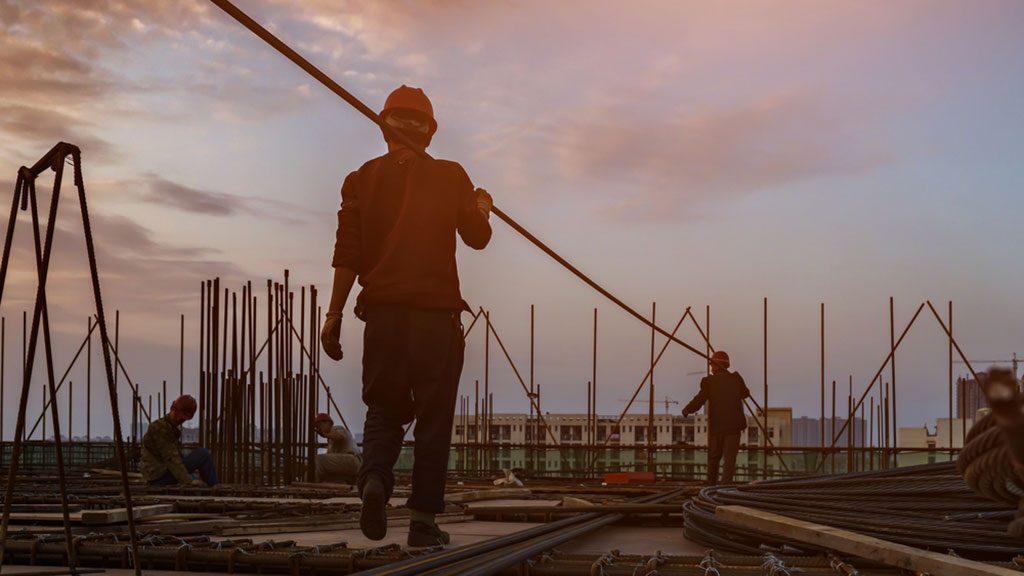A University of Toronto civil engineering professor is leading research into how the construction sector is dealing with the coronavirus pandemic, in hopes that the next time a pandemic hits there will be a wide range of best practice guidelines to follow.
As it stands, says Prof. Tamer E. El-Diraby, aside from a few triumphs such as its resilience in developing new supply chains and advocacy successes that kept most projects going, the construction sector fared poorly, suffering from fragmented strategies and a general lack of preparedness.
“It is obvious that the sector is going through a big challenge,” said El-Diraby. “The industry has suffered a lot and many people, especially small contractors, are going through a very hard time.
“This challenge is not just PPE or social distancing or wearing the mask. The challenge goes to the core survival of the sector, and the major consequences on the performance of companies, realization of projects and, more important, the livelihood of the labour force.”
The professor’s research is supported by the Residential and Civil Construction Alliance of Ontario, the Residential Construction Council of Ontario and the Ontario Society of Professional Engineers and it’s labelled Best Practices for Industry-wide Collective Action to Manage Pandemics in the Ontario Construction Sector.
The study is being conducted in three phases and El-Diraby’s team is hoping that construction stakeholders across the province will participate in one of the stages. First is a survey of participants, then interviews will follow, and finally there will be workshops to discuss findings and develop solutions.
The process itself will produce awareness that could lead to new coalitions and stronger governance models, said El-Diraby.
“We want to learn from the surveyed experts, but we also want to get their attention to this idea of what comes next.
“The most important question, how can we make sure that the policy is implemented, who would do what, what is the role and responsibility of each one, to make sure that this is not just a report on the shelf, but it’s an actual policy.”
El-Diraby said while stakeholders have been consumed with issues such as health and safety protocols to ensure projects can keep going, few have looked at the broader survival of the sector.
“And what can the industry do to help everybody, the government, the community, in combating the next pandemic,” he said. “Just imagine if there is no way to operate or maintain critical infrastructure. It is an important thing for us to learn, and also indirectly, try to introduce new concepts to the industry about how to face adversity.”
El-Diraby is studying six domains of action: health and safety, construction and project management, business management, public policy, design and engineering, and supply chain.
He compared construction to sectors such as banking, manufacturing and even the hard-hit airline industry that were able to pull together comprehensive business cases. There are only five major banks so that sector was able to develop plans and present its case for policy accommodations to governments swiftly and coherently.
“The construction industry was not prepared for any of this,” he said, blaming its diversity and fragmentation, its competitive nature and its ad hoc way of thinking.
“You’ll find many companies in the auto manufacturing sector, for example, are competitive, but they work together to develop the next battery. This culture has not existed in the construction industry.”
The sector is not aware of cross-company realities, El-Diraby said, as firms and associations focus on the short term. He noted his work relates to enhancing and re-engineering information systems and work processes in the construction industry, increasing the resilience of the sector, and giving people the tools to excel and innovate.
Despite its failures, the sector excelled in some areas, El-Diraby said.
“This was a wake-up, and we managed to see leadership and vision from several industry associations, whether it’s on the construction side, the labour side, the contractors, even the consultants. So that was, I think, one glimmer of hope, an opportunity for them to push the industry to the next level.”
The survey can be accessed by clicking here.
Follow the author on Twitter @DonWall_DCN.











Recent Comments